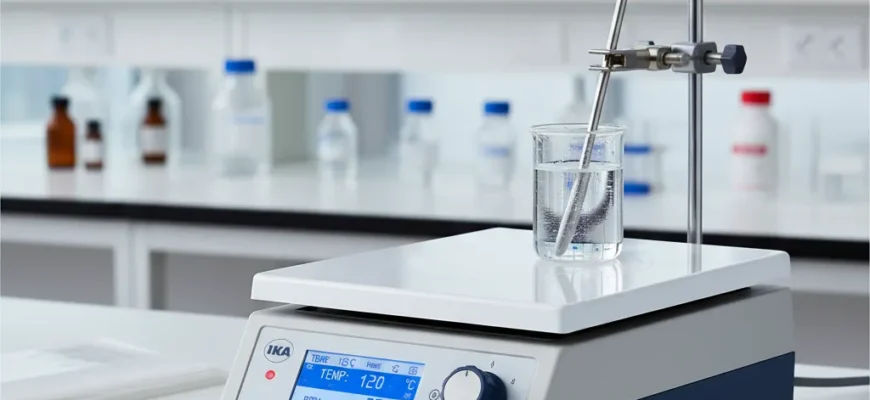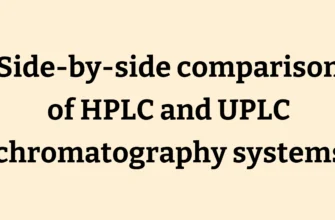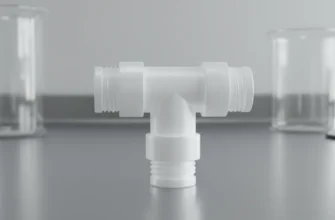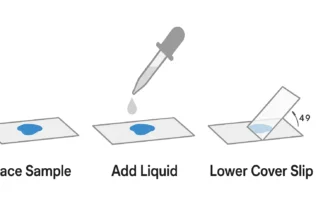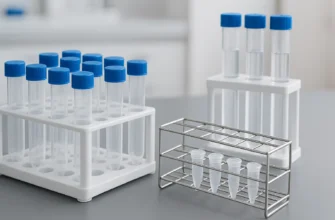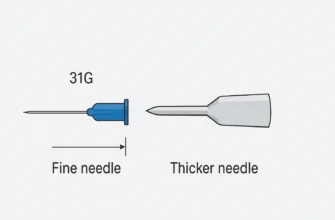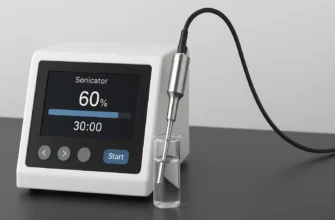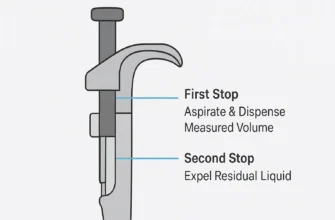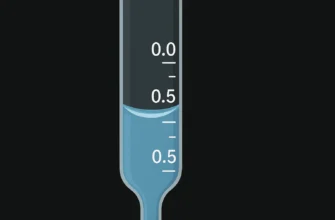Essential Guide to Choosing the Right Lab Hot Plate
Key Highlights
Safety-First Design: Modern lab hot plates feature advanced safety systems including overtemperature protection, automatic shut-off, and hot top warning indicators to prevent accidents.
Surface Material Matters: Ceramic plates offer superior chemical resistance and can withstand temperatures up to 550°C, while aluminum provides better heat distribution and durability.
Digital vs. Analog Control: Digital controllers provide precise temperature control with accuracy to ±1°C, while analog models offer simplicity and cost-effectiveness.
Stirring Capabilities: Hot plate stirrers combine heating with magnetic stirring, reaching speeds up to 2,500 rpm for homogeneous sample mixing.
Temperature Range Considerations: Standard hot plates typically operate from ambient temperature to 350°C-550°C, with specialized high-temperature models reaching up to 540°C.
Regular Maintenance: Proper cleaning and calibration ensure reliable performance, with cleaning required weekly and calibration monthly for accurate results.
Introduction
Laboratory hot plates represent essential equipment in modern scientific research, providing safe, precise, and flameless heating solutions for countless applications. These devices have evolved significantly from simple heating elements to sophisticated instruments featuring digital controls, advanced safety systems, and integrated stirring capabilities. Whether you’re conducting chemical synthesis, sample preparation, or routine heating tasks, selecting the appropriate hot plate is crucial for achieving reliable, reproducible results while maintaining laboratory safety standards.
Understanding Lab Hot Plates: Function and Common Uses
At their core, laboratory hot plates utilize electric heating elements positioned beneath a flat surface to provide uniform, controllable heat transfer to samples. This design eliminates the safety hazards associated with open flames while offering precise temperature control essential for reproducible experiments. The heating surface, typically made from ceramic, aluminum, or stainless steel, distributes heat evenly across the entire plate area.
Modern hot plates serve diverse applications across scientific disciplines. In analytical chemistry, they heat solvents and facilitate chemical reactions requiring specific temperature conditions. Biological laboratories use them for sample preparation, including warming media and preparing histological specimens. Materials science applications include sample drying, crystal growth, and thermal treatments. The consistent, controlled heating environment makes hot plates indispensable for any process requiring precise temperature management.
Key Applications in Scientific Laboratories
Chemistry and Analytical Labs: Hot plates facilitate organic synthesis, solvent evaporation, and recrystallization processes. They provide the controlled heating necessary for temperature-dependent reactions while allowing researchers to observe color changes and reaction progress.
Biology and Pathology: These laboratories rely on hot plates for warming specimens during cytological and histological analysis. The gentle, uniform heating prevents sample damage while ensuring proper preparation for microscopic examination.
Materials Science: Hot plates support various thermal treatments, including sample drying, annealing processes, and materials characterization studies requiring specific temperature profiles.
Quality Control: Hot plates enable routine testing procedures, including dissolution testing, thermal stability studies, and standard preparation across pharmaceutical and manufacturing industries.
Differences Between Hot Plates and Hot Plate Stirrers
Standard Hot Plates focus exclusively on heating applications. These units feature a heating element beneath the plate surface with temperature control systems ranging from simple analog dials to sophisticated digital controllers. They excel at basic warming tasks, sample drying, and applications where mixing isn’t required. The simpler design translates to lower costs and reduced maintenance requirements.
Hot Plate Stirrers combine heating with magnetic stirring capabilities. An electromagnet positioned beneath the heating surface creates a rotating magnetic field that couples with magnetic stir bars placed in sample containers. This dual functionality enables simultaneous heating and mixing, ensuring temperature uniformity throughout liquid samples. Digital models offer independent control of both heating and stirring functions, with stirring speeds reaching up to 2,500 rpm.
The choice between these options depends on your specific application requirements. Standard hot plates suit applications requiring only heating, while stirrer models prove essential for chemical reactions, solution preparation, and any process benefiting from continuous mixing during heating.
Types of Laboratory Hot Plates
Standard Hot Plates
Standard hot plates represent the most straightforward heating solution, featuring a heating element beneath a temperature-controlled surface. These units excel in applications requiring consistent heating without mixing, such as sample drying, glassware warming, and simple thermal treatments. Modern standard hot plates incorporate safety features including overtemperature protection and hot surface indicators.
Advantages: Lower initial cost, simplified operation, minimal maintenance requirements, and reliable performance for basic heating tasks.
Limitations: No mixing capability, potential for temperature gradients in liquid samples, and limited functionality compared to stirrer models.
Magnetic Stirrer Hot Plates
Magnetic stirrer hot plates integrate heating and mixing functions through an electromagnetic system beneath the heating surface. This design enables simultaneous temperature control and sample agitation, essential for chemical reactions, solution preparation, and applications requiring homogeneous heating.
Key Features:
-
Independent control of heating and stirring functions
-
Stirring speeds up to 2,500 rpm
-
Magnetic coupling strength suitable for various sample viscosities
-
Digital displays for precise parameter monitoring
-
Advanced safety systems including stir protection and probe monitoring
Materials Used for Hot Plate Surfaces and Their Benefits
Ceramic Hot Plates
Advantages: Ceramic surfaces offer exceptional chemical resistance, making them ideal for corrosive chemical applications. They can withstand temperatures up to 550°C and provide excellent thermal stability. The white surface facilitates visual observation of color changes during reactions, particularly useful for titrations and analytical procedures.
Limitations: Ceramic plates are susceptible to thermal shock from sudden temperature changes. They may not provide uniform heating across the entire surface and are not suitable for use with metal containers or sand baths.
Best Applications: Glass vessel heating, chemical synthesis with aggressive reagents, and applications requiring visual monitoring of sample changes.
Aluminum Hot Plates
Advantages: Aluminum surfaces provide superior heat distribution and thermal uniformity across the entire plate area. They are more durable than ceramic, resistant to cracking, and suitable for use with both glass and metal containers. Aluminum plates heat uniformly to the edges, maximizing usable surface area.
Limitations: Lower maximum temperature compared to ceramic (typically 380°C), reduced chemical resistance, and potential for surface scratching with aggressive cleaning.
Best Applications: High-throughput laboratories, applications requiring uniform heating, and processes involving metal containers.
Specialized Surface Materials
Stainless Steel: Highly resistant to corrosion and suitable for sterile environments, including cleanrooms and cGMP facilities. These surfaces resist alcohols, ethers, and most solvents while maintaining easy cleaning characteristics.
Polypropylene: Excellent chemical resistance to acids and solvents, though limited to lower temperature applications. Ideal for wet chemistry involving harsh chemicals like methanol or ethanol.
Essential Factors When Choosing a Lab Hot Plate
Temperature Range and Control Features
Temperature Requirements: Modern hot plates typically operate from ambient temperature to 350°C-550°C, with specialized models reaching higher temperatures. Consider your maximum temperature requirements and select a unit rated at least 50°C above your needs for optimal performance and safety margins.
Control Systems: Digital controllers offer superior accuracy (±1°C) with programmable settings, external probe compatibility, and data logging capabilities. Analog controllers provide simplicity and cost-effectiveness but with reduced precision (±5-10°C).
Advanced Features: Look for programmable heating ramps, multiple temperature setpoints, and integrated timer functions for complex heating protocols.
Safety Features and Maintenance Requirements
Critical Safety Elements:
-
Overtemperature Protection: Dual independent safety circuits prevent dangerous temperature excursions
-
Hot Top Indicators: LED warning lights remain illuminated when surface temperatures exceed safe handling levels
-
Automatic Shut-off: Advanced models feature presence detection and communication-based safety systems
-
Current Protection: Safeguards against electrical overload conditions
Maintenance Protocols: Regular cleaning maintains performance and extends equipment life. Ceramic surfaces require gentle cleaning with non-abrasive materials, while aluminum surfaces tolerate more aggressive cleaning methods. Monthly calibration ensures temperature accuracy.
Size and Capacity Considerations
Select a hot plate with a heating surface larger than your typical sample containers to ensure stability and uniform heating. Consider laboratory bench space constraints and power requirements, as larger units may require three-phase electrical connections.
Application-Specific Requirements
Sample Viscosity: High-viscosity samples require powerful magnetic coupling systems to prevent stir bar decoupling. Look for units with variable coupling strength and speed ramping features.
Chemical Compatibility: Match surface materials to your chemical environment. Ceramic excels with corrosive chemicals, while aluminum suits general laboratory applications.
Volume Requirements: Consider typical sample volumes and select appropriate plate sizes and stirring capacities accordingly.
Safety Considerations and Best Practices
Explosion-Proof Requirements
Standard vs. Explosion-Proof: Regular hot plates are not explosion-proof or intrinsically safe. For applications involving flammable solvents or explosive atmospheres, use UL-listed explosion-proof units designed for Class I, Group D environments.
Flammable Material Precautions: When heating flammable liquids, use appropriate containment, ensure adequate ventilation, and never use open vessels. Water baths provide safer alternatives for low-boiling solvents.
Operational Safety Protocols
Equipment Inspection: Regularly inspect electrical cords, plugs, and thermostats for damage. Test on/off switches to ensure proper function and rapid cooling when deactivated.
Proper Glassware: Use only heat-resistant borosilicate glassware, inspecting for cracks before heating. Avoid thick-walled vessels that may heat unevenly and crack.
Temperature Management: Use medium settings for liquid heating, as high settings can produce surface temperatures exceeding 540°C. Add boiling stones to prevent superheating and violent boiling.
Fire Prevention: Keep flammable materials at least two feet away from hot plates. Never heat metal containers or foil, as this can damage equipment and create electrical hazards.
Maintenance and Cleaning Procedures
Routine Cleaning Protocols
Ceramic Surfaces: Use plastic scrapers to remove spills while hot, followed by gentle cleaning with non-abrasive cleaners after cooling. Avoid metal tools that can scratch the surface.
Aluminum Surfaces: Clean with warm soapy water and wooden spatulas for stubborn deposits. A vinegar-water mixture effectively removes stains without damaging the surface.
Safety Precautions: Always disconnect power and allow complete cooling before cleaning. Watch for hot surface indicators before beginning maintenance procedures.
Calibration Requirements
Monthly calibration ensures temperature accuracy using certified reference thermometers. Document temperature variances and adjust controls as needed to maintain measurement traceability.
Conclusion
Selecting the appropriate laboratory hot plate requires careful consideration of temperature requirements, safety features, surface materials, and application-specific needs. Modern hot plates offer sophisticated temperature control, advanced safety systems, and reliable performance when properly maintained. Whether choosing a basic heating model or an advanced stirrer unit, prioritize safety features, chemical compatibility, and long-term reliability to ensure successful laboratory operations.
The investment in quality hot plate equipment pays dividends through improved experimental reproducibility, enhanced safety, and reduced maintenance costs. By understanding the key differences between available options and matching equipment capabilities to your specific requirements, you can select hot plate systems that will serve your laboratory effectively for years to come.
Frequently Asked Questions
Is it safe to heat flammable liquids with a hot plate?
Heating flammable liquids requires special precautions and appropriate equipment. Standard hot plates are not explosion-proof and should not be used with flammable materials in open vessels. For such applications, use UL-listed explosion-proof hot plates designed for hazardous environments, ensure proper ventilation through fume hoods, provide secondary containment to prevent spills, and consider safer alternatives like water baths for low-boiling solvents. Always consult safety protocols and consider using condenser systems for closed-vessel heating of volatile materials.

